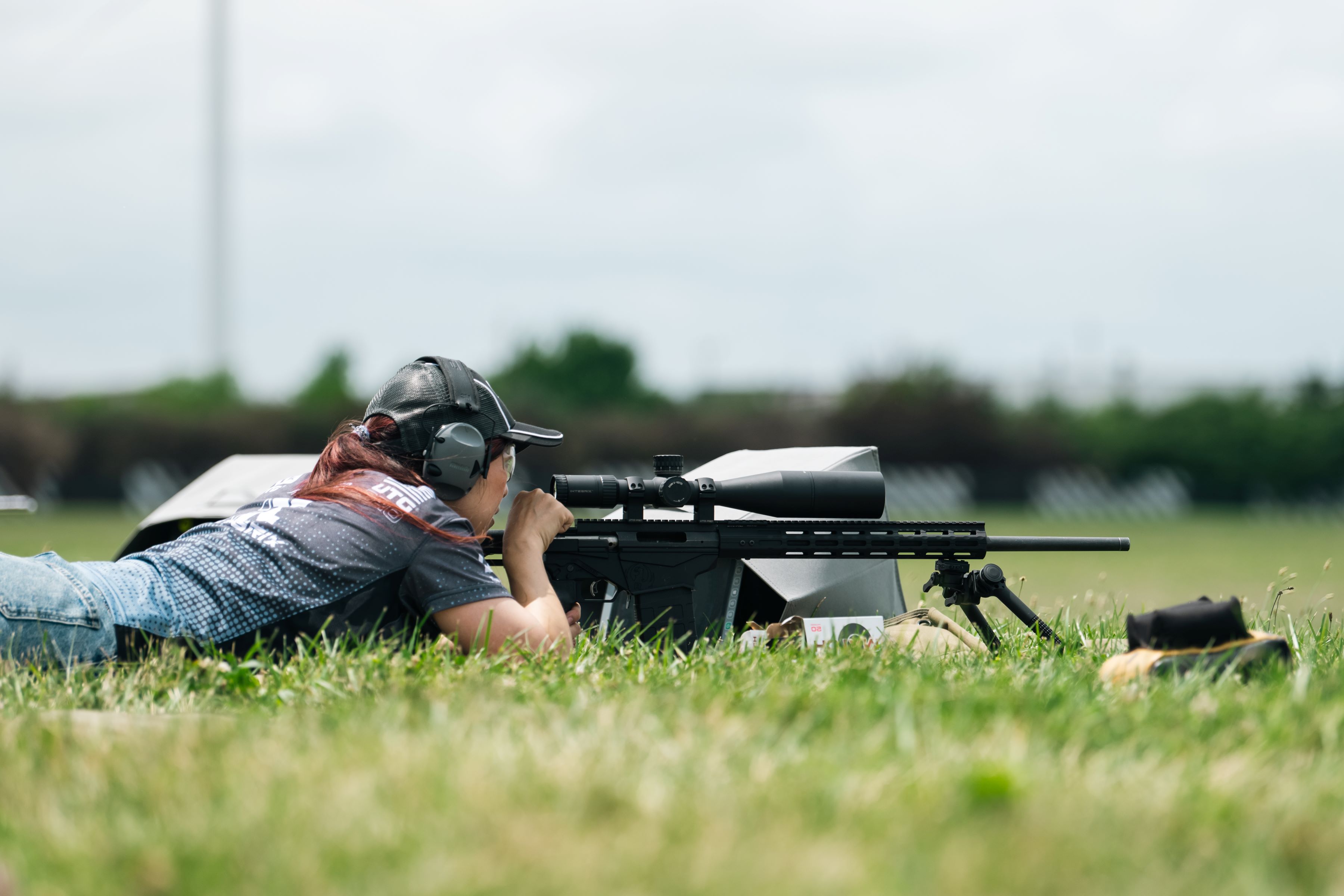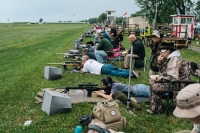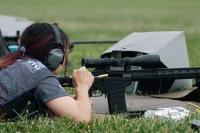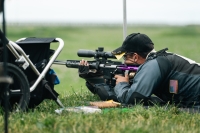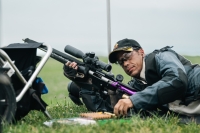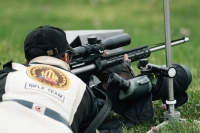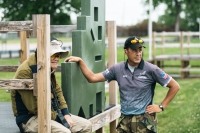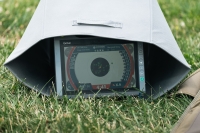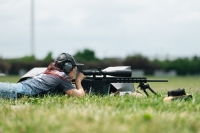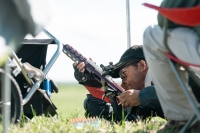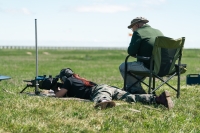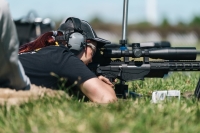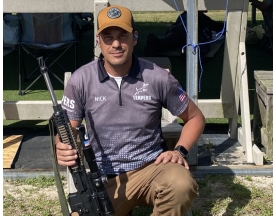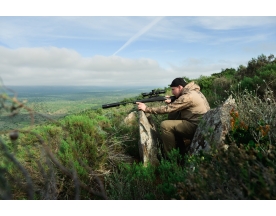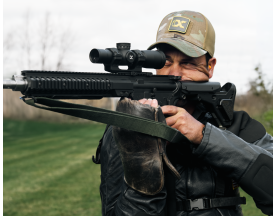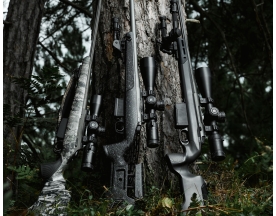We will use cookies to ensure that we give you the best experience on our website. If you accept, that means you agree to our use of Cookies and Privacy Policy. Learn more
Competing at 1,000 Yards
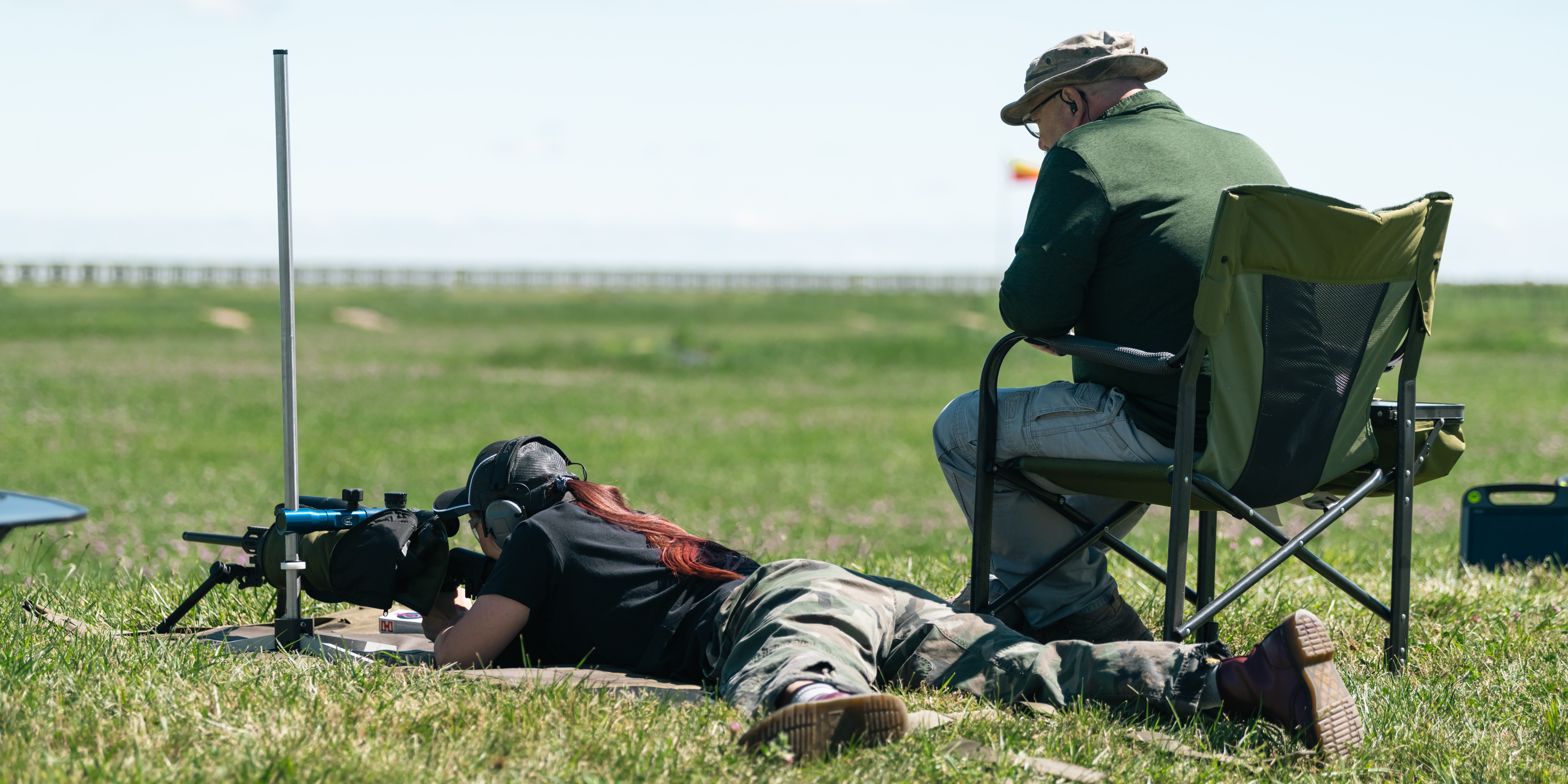
Preparing for a 1,000 Yard Match at Camp Perry
With the rifles, ammo, and optics on the market nowadays, some might say: Anyone can shoot 1,000 yards. Can a novice get out there, chamber a cartridge, and hear the sweet clang of steel 1,000 yards away? Absolutely. Granted, you have the location to shoot out that far and your wind conditions allow it. But how much more is there to it? We took a roadtrip this weekend from Livonia to Port Clinton, Ohio to find out. It was Leapers' first time participating in the CMP (Civilian Marksmanship Program) June Long Range Match at Camp Perry. Our goal was to step into the math, mechanics, intuition and skill behind accurate and precise 1,000 yard shots.
It wasn't our first time shooting 1,000 yards, but it was our first competition. When we get the chance, we make the trip up north to the Marksmanship Training Center (MTC) in Lake City, Michigan and use their 1,300 yard range. With the development of our new precision optics, Integrix®, we began inviting media and experts to shoot our scopes over 1,000 yards at SHOT Show's Industry Day. Their steel targets were an achievable goal 4 to 6 feet in diameter and we got shooters on target within 1-2 shots, even through dark and rainy conditions.
Camp Perry was going to be fun. Six 1,000 yard matches over the course of 2 days with 30 minutes per match to place unlimited sighters and 20 shots on record. Nick Till competing in Match Rifle and Palma Rifle and myself competing in F-Class using a bipod as a rest. Let's get into the setups.
The Builds
For F-Class, I planned to use my Ruger Precision Rifle (RPR) with 6.5 Creedmoor Hornady match ammo in 147 grain and our soon-to-release Integrix 4.5-27X56 LR/ELR scope in MRAD. I brought our latest prototype of our UTG Big Bore Bipod, the Gen. 2 version of the heavy duty best seller for benchrest shooters. With an 8-12 inch center height it would be too tall to shoot prone, but I could move the legs out 45 degrees to get myself closer to the ground.
As a champion High Power XTC shooter, Nick Till wasn't about to shoot with a bipod. He was slinging it CMP style with his limited edition leftie Tubb gun in 6XC sporting an Integrix 3-18X44 Mid Range scope for his Match Rifle. For Palma Class it was irons only: a Tubb gun with an Eliseo chassis, Barnard action, and Obermeyer barrel in 308 with Warner aperture iron sights. No store-bought ammo for Nick Till; he reloads.
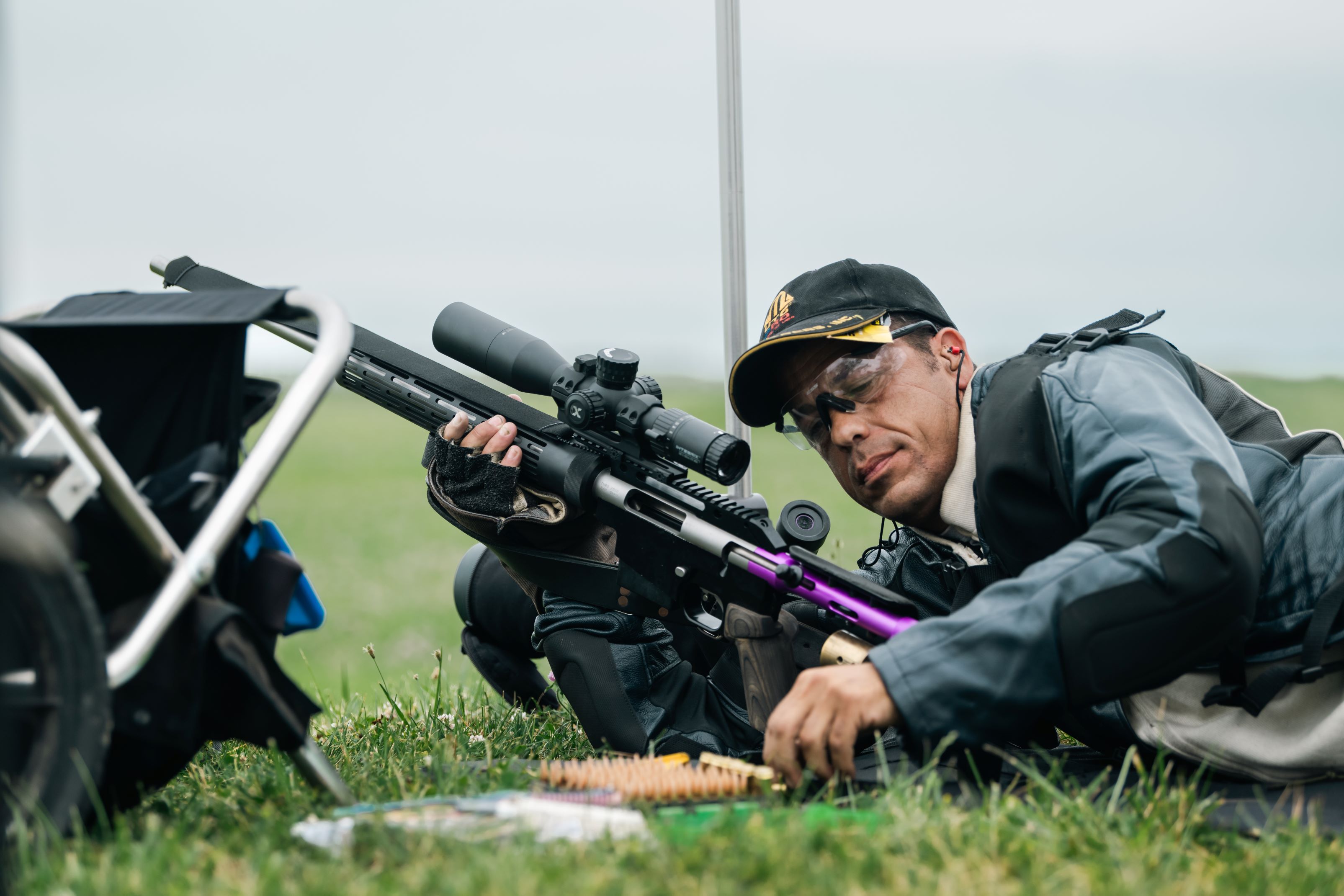


Getting Ready for the Range
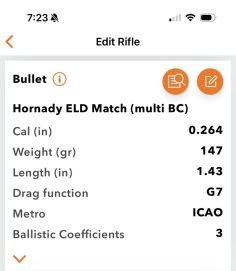


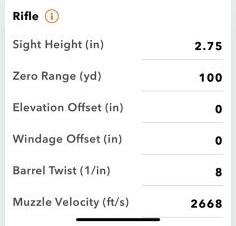


Nick Till has a big backyard, so he zeroed his scope at 600 yards. I tapped the PD guys to borrow our 100-yard range from its regular testing schedule and zero my 4.5-27X at 100. We used a MagnetoSpeed chronograph to measure my muzzle velocity and my 147 grain Hornady's were shooting at 2668 ft/s. It was gratifying to see only 2 outliers from a set of 7 shots: consistent ammo that stayed within a 10 ft/s range.
Now it was time to calculate my try dope. I downloaded the GeoBallistics app and input the data on my ammo, sight height, zero range, and muzzle velocity along with some dummy data for the weather, temperature, pressure, and relative humidity. The app did its magic, estimating 8.6 mil up in elevation for 1,000 yards. 1 mil equals 36 inches at 1,000 yards, and even 0.1 mil is over 3. Now I just needed to update the app for the weather for the actual conditions on the day of competition and cross my fingers that my initial dials would allow me to hit paper.
The Targets
CMP was running their June Long Range Match at Camp Perry under NRA rules. For Nick Till shooting Match and Palma class with nothing but a sling, NRA LR targets for 800, 900, and 1,000 yards run this size.
Aiming Black
X Ring - 10 in
10 Ring - 20 in
9 Ring - 30 in
8 Ring - 44 in
Rings in White
7 Ring - 60 in
6 Area - 72 in
I was shooting F-class with a bipod. Pure-hearted CMP shooters will scoff, but hey: the targets get a lot smaller.
Aiming Black
X Ring - 5 in
10 Ring - 10 in
9 Ring - 20 in
8 Ring - 30 in
7 Ring - 44 in
Rings in White
6 Ring - 60 in
5 Area - 6 x 6 ft
We would be shooting with the CMP's travel system of Kongsberg electronic targets. Gone are the days of competitors standing in the pits, bullets landing and spewing dirt above their heads, completing full lat pulldown workouts between matches to mark and signal to the shooter which ring each round hit. Nick Till told me a story about a guy in the pits who got shot through the cheek, and that did not sound pleasant to me.
If you ever get the chance to shoot e-targets, you're in for a treat. Kongsberg targets have a portable screen set up right next to you as you shoot, live updating with where each round hit on your target and automatically tallying your score. No more squinting through a spotting scope to figure where you landed. Uploaded to the cloud so anyone can follow your match shot for shot online.
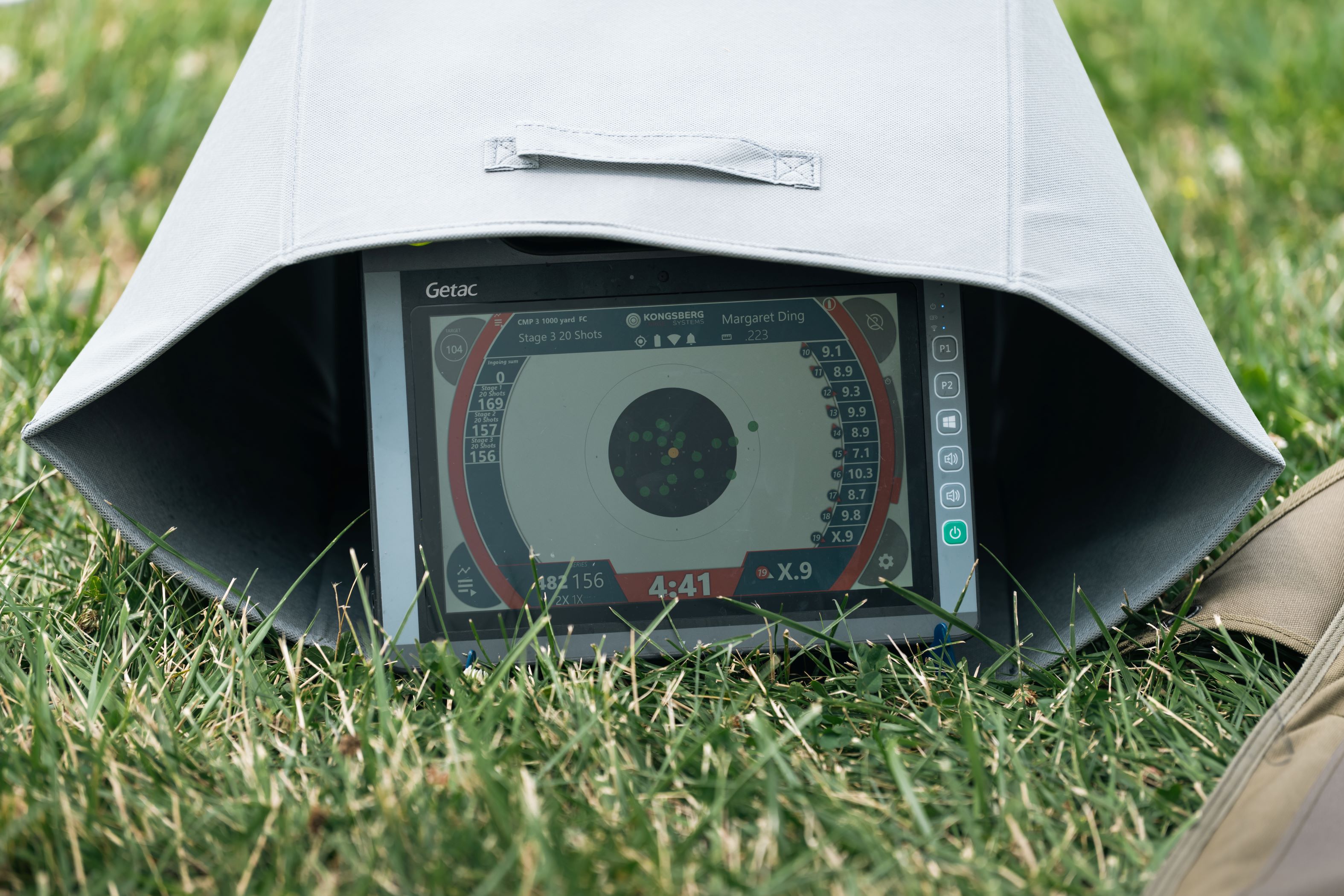


High Scores and Mishaps
Morning Conditions
Let's get to the competition. The entire week leading up to Saturday and Sunday forecasted thunderstorms starting Friday evening. The team was crossing fingers that the rain would subside by Saturday morning when the matches were scheduled to start, since we would not be shooting from under cover. Nick Till is an early bird so he left before 6 to arrive at Camp Perry by 8:15 am. I took mercy on our team and hustled everyone out the door at HQ by 6:45 am. The drive from Michigan to Camp Perry OH is just an hour and a half. Steady rain.
The sky cleared by the time we all arrived at 8:30 am but quickly turned again. The military base is right off Lake Erie so while you'll never be want of freshwater, the weather can be unpredictable. More storms came and the CMP organizers and competitors agreed to postpone live fire from 9 am to 10:30. Nick Till pulled on his Vortex BDU waterproof matching set and we huddled under a metal roof while I regretted wearing wet jeans. 10:30 came and went, and luckily no one was enthused to shoot in the rain, so we postponed again til 11:30 am. I was sure my team was sending me mental daggers for dragging them out of bed at 5.
By the time we started at noon, we were thankful for the Kongsberg e-targets that allowed us to shoot 3 matches with 2 relays each in 3 hours time. For that first day flags on the range were almost never relaxed, or 45, and often at 90 degrees. Winds were high at 20 mph or more with 30 mph gusts. A fun environment to shoot past 600 for the first time. Day two was much the same, though no rain and a few more lulls.
First, The Results
How did we do? Over 6 matches in F-class, my highest score was 171 out of 200, often ranking last in my class. Nick Till finished 5th on Saturday and 2nd on Sunday and didn't go home with any trophies, but scored the high score of the weekend in the first Match Rifle match on Saturday: a 199 with 8 X's. Link to full CMP Long Range Rifle Match Results on CMP's official website here.
Watch Us Compete at Perry
Check out our Youtube video to see Nick Till partner up with Leapers and follow along our experience at competition.
Mistakes and Malfunctions
After shooting a high score of 199 and 8 X's in his first match on Saturday, Nick was warmed up and on fire. The action on his discontinued limited edition leftie Tubb gun was so smooth he racked the bolt with the lightest of taps. Match 2 turned quickly. He lined up his shots on the sling using the Integrix 3-18, felt the X, and pulled the trigger: but nothing happened. The primers weren't going off. He ejected over half his cartridges, lost out on shots he knew were good, and was left with over 15 rounds of unused ammo by the end of the match. It was a mind game as he aimed: Will it go off? Will it not?
Turns out the spring on his Tubb gun was extra compressed, and the firing pin wasn't hitting the primer. When we disassembled his gun and looked at his spring versus a friend's, his friend's was at least an inch longer. Now, some competitors do cut their springs so the empty shell ejects closeby and can be easily retrieved, but Nick's was just too short. It must have worn out past its prime, or his measurements on his loads made in his basement were slightly off. The dimensions weren't adding up. They tried stretching his spring out but it compressed right back during the next match, and that day's scores showed the impact.
My day was a lesson in practice and preparation. First, etiquette. I didn't fold down the front flap of my shooting mat when I laid it down and shot a few holes through it as my badge of beginner-hood. We didn't realize the match was single load, and on top of that, the RPR does not allow the racking of the bolt with an empty magazine. I needed a sled magazine to avoid blocking the bolt and be able to drop a cartridge in through the ejection port, which I did not have. I developed a workaround that was hard on the fingers, feeding the round into the magazine through the ejection port.
My M-Lok to picatinny rail was loose and I didn't have the proper tools to fully tighten it, so my bipod was wiggling. My 20 round P-mag was too long and I needed a shorter magazine to get lower shooting prone. I ended up feeding the round into the magazine, racking the bolt forward, then lifting the gun up to release the mag before repositioning on the ground prone to make my shot. With the weight of the RPR and the recoil from 6.5 Creedmoor, I was out of breath by the end of the match.
Even when you get into a groove yourself, outside factors come into play. In each match we got 30 minutes to complete unlimited sighters and 20 shots on record. On the second match of the second day, I was operating my setup smoothly and taking my first sighters. I had only gotten 2 or 3 shots off, but my Kongsberg e-target showed 6 shots on my target. Crossfire. I couldn't tell which shots were mine and which were other competitors'. Nick Till always likes to remind me to chant my target number before I take each shot so I make sure I'm shooting at the right target. At 1,000, a good portion of the crossfire is due to competitors' dials being off. After going back and forth with range officers and taking some more sighters to figure out where I was hitting, I was 15 minutes in and had to rush through my 20 shots. All the more important to be able to pull off shots quickly when you have the right conditions.
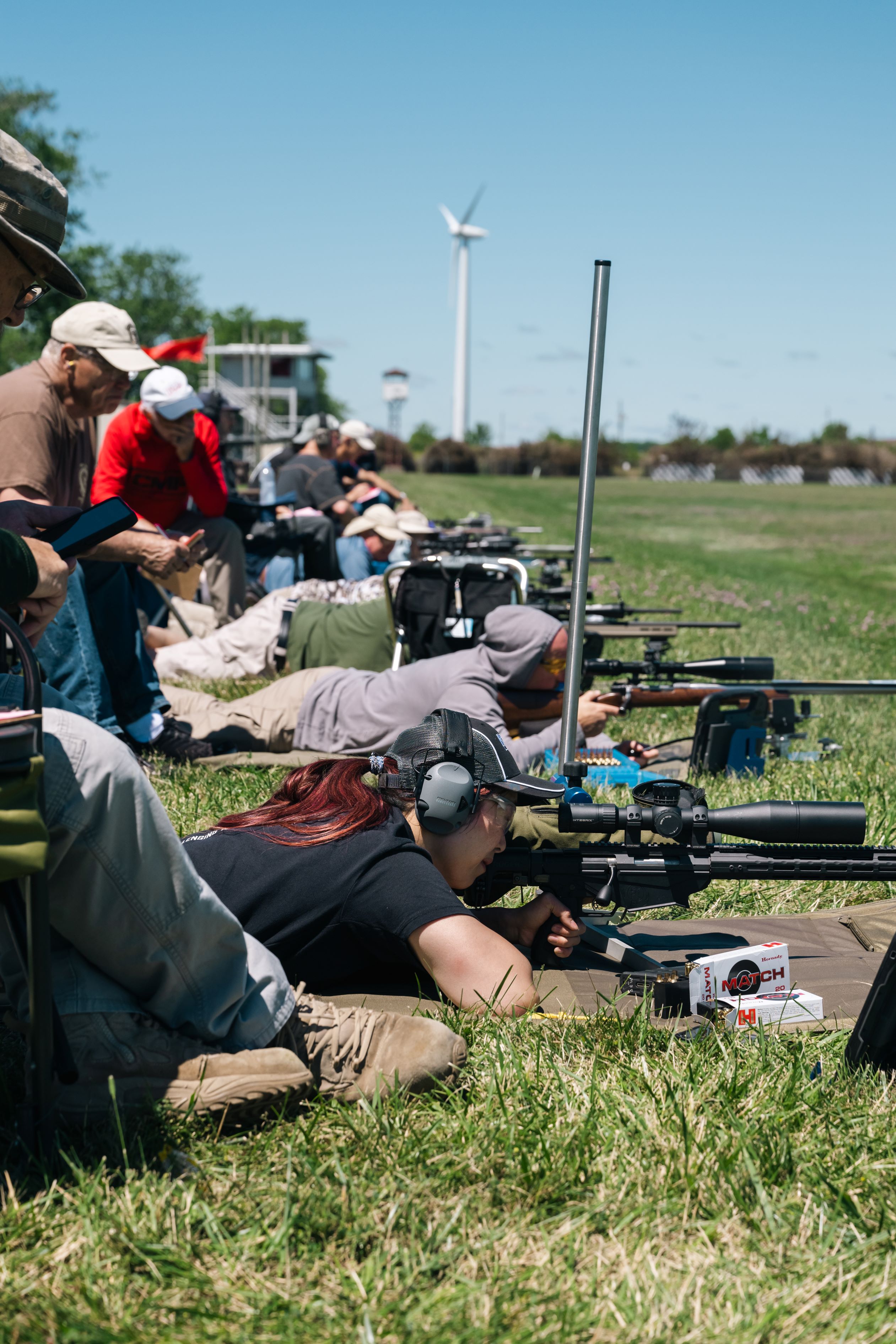


Lessons Learned
When you're out at competition, you hear a lot of tips and tricks and knowledge shared. Sometimes there are varying ways to shoot, and sometimes there is misinformation. My goal was to keep the peace of mind to listen, try things out for myself, and learn to improve in my incremental way. My very first shot was on paper, which was lucky. My partner in relay 2 never got on paper at 1,000 yards and never saw dirt kick up. We concluded that he might have had his elevation dialed much too far up, over shooting the targets.
Each part of the equation matters when you're shooting out 1,000 yards. Just because your scope holds zero perfectly doesn't mean your rifle was manufactured to. You need a good rifle, good ammo, and a good optic. And underneath all that, you simply need good fundamentals. Consistent cheek weld, trigger squeeze, and breathing. When all those components are in place, and you land in a different place than you intended to, then you know it's wind.
First, wind direction. When you have a no-value wind going away from you, your impacts will be high and to the right for most rifles. When the wind is coming towards you, your impacts will be low and to the left.
Then, wind speed. Before leaving I looked up different flag angles and how to divide by 4 to find wind speed and adjust my dope. I tried to study photos of mirage to read wind without the flag. But wind conditions ended up much higher than average: the flags were flapping around 90 degrees instead of relaxed state, and the mirage was constantly running straight across without any lazy breaks. At that point reading mirage was like trying to differentiate a river's water flow between medium fast and faster, which really takes a trained eye.
I asked my relay partner if he dialed for the wind, and he said he dialed for sighters and didn't touch the windage knob during the match, using holds instead. Nick Till dials windage right on through. Some shooters advised me to wait for my wind conditions; meanwhile Nick Till shoots through fluctuating wind and adjusts with experience and intuition.
During my first match I dialed windage and elevation after every shot. This resulted in a decent grouping, but I was also adjusting for trends in my own shooting error. During my second match I tried not dialing for windage. But I hadn't gotten a hang of waiting for wind, and my grouping scattered a bit more.
By the second day I was less preoccupied with just hanging on, and able to concentrate on improving my wind reads. Before, I'd get a random X. I would be running out of time or anxious about making the shot and not be able to stop and read the flags each time I shot. By the middle, I hit one or two X's on purpose.
My relay partner, Dave Berlinski, ended up winning gold in F-Class. He was quiet at first but coached me during my sighters and I was grateful for the tutelage. Dave taught me to observe the wind when I completed my sighters and attempt to shoot whenever wind seemed to mimick the same conditions. All 3 flags down range in the same position, and feeling what the wind was doing from my shooting position at the firing line. Dave said that wind tends to ebb and flow. When you see your condition come up, try to get as many shots off as you can. It will likely ebb, but after a while, the pendulum will swing back, so be ready. I got better at waiting out fluctuations, wasting less time, being prepared and locked and loaded when my wind returned. By the end of my last match, I'd achieved my high score of 171 with intention over luck. I had less X's but I had my best grouping yet.
Using Integrix in the Field
My try dope wasn't perfect, but it got me there. My app gave me 8.6 mils in elevation and I ended up at 9.2 mils at Perry. By the time I finished the last match I was adjusting for wind around 1.4 mils to the left. Over the course of the weekend I had gone up to 2 or more. Shooting through 25 to 30 mph winds requires a good amount of range over 1,000 yards. Nick Till was using our Integrix 3-18X44 and somewhere on the second day, ran out of windage adjustment on his turret. As of mid 2024 our 3-18X range comes with 24 MOA windage, or 10 mil in windage depending on which unit model you choose. With one mil equaling 3.6 MOA the MOA scope comes with 35% less range in windage, something we were aware of and had traded off in favor of user-friendly turrets. (The MOA turrets are 1/4 MOA per click and in order to make dialing windage less confusing for the user, the windage knob was limited to 1 revolution. Split in half for left and right, your limit becomes 12 MOA left and 12 MOA right.)
The most recent time I zeroed a rifle for 100 yards, I had to dial 7 inches down in elevation and 4 inches to the right. It doesn't take much squinting to believe that zeroing your windage could take up 6 MOA or more of your turret left or right. My Integrix 4.5-27X in MRAD sitting on my desk reads 1.4 mil on my windage, which is what I was dialing for the end of my match. During the course of the weekend I was dialing up to 2. That equals another 6-7 MOA. If your zero took you left, and the wind took you left again, it wouldn't be too hard to imagine hitting the end of your windage range when shooting 1,000 yards. With the larger magnifications available now, not everyone would be using a 3-18X to shoot 1,000 yards. But by any military or average standard, 18X is plenty magnification for that distance. Then the question becomes, Is the shooter dialing for wind or holding for wind within their application?
I took the learnings back to our PD team as we were aware of the trade off. We plan to take these scopes and our ELR Integrix 6-36X56 out to Texas to shoot long range again in August. This is just the beginning. By building our new optics Integrix in-house, we have full control and own the capabilities to tinker around with the design to iterate on what's best. We look forward to meeting you in the field and learning what works for you.
